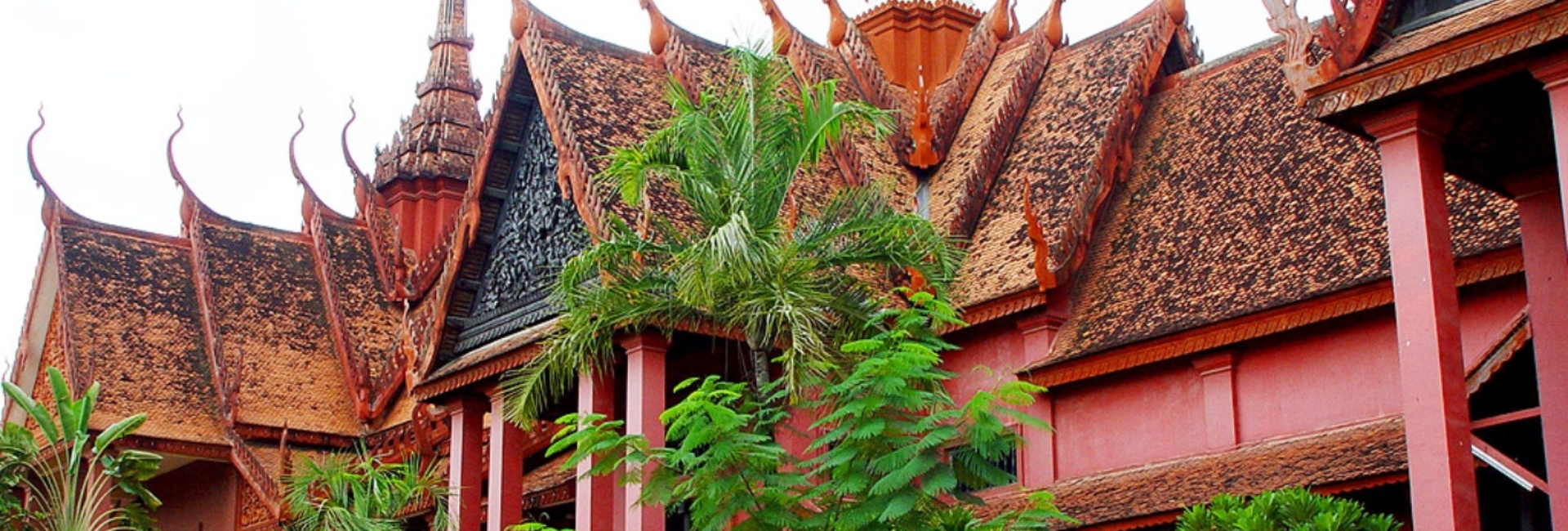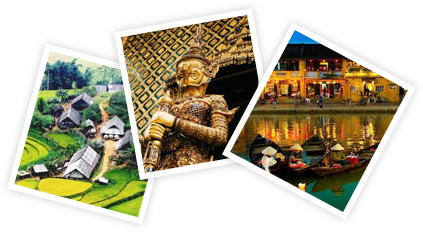The Cambodian National Museum is a must-visit destination located in the heart of Phnom Penh, the capital city of Cambodia. This possesses one of the world’s largest collections of Khmer sculptures, a millennium’s worth, and more of masterful Khmer art, dating from the 4th to 14th century. Let’s delve deeper into Indochina Voyages to get to know more about this Phom Penh’s highlight.
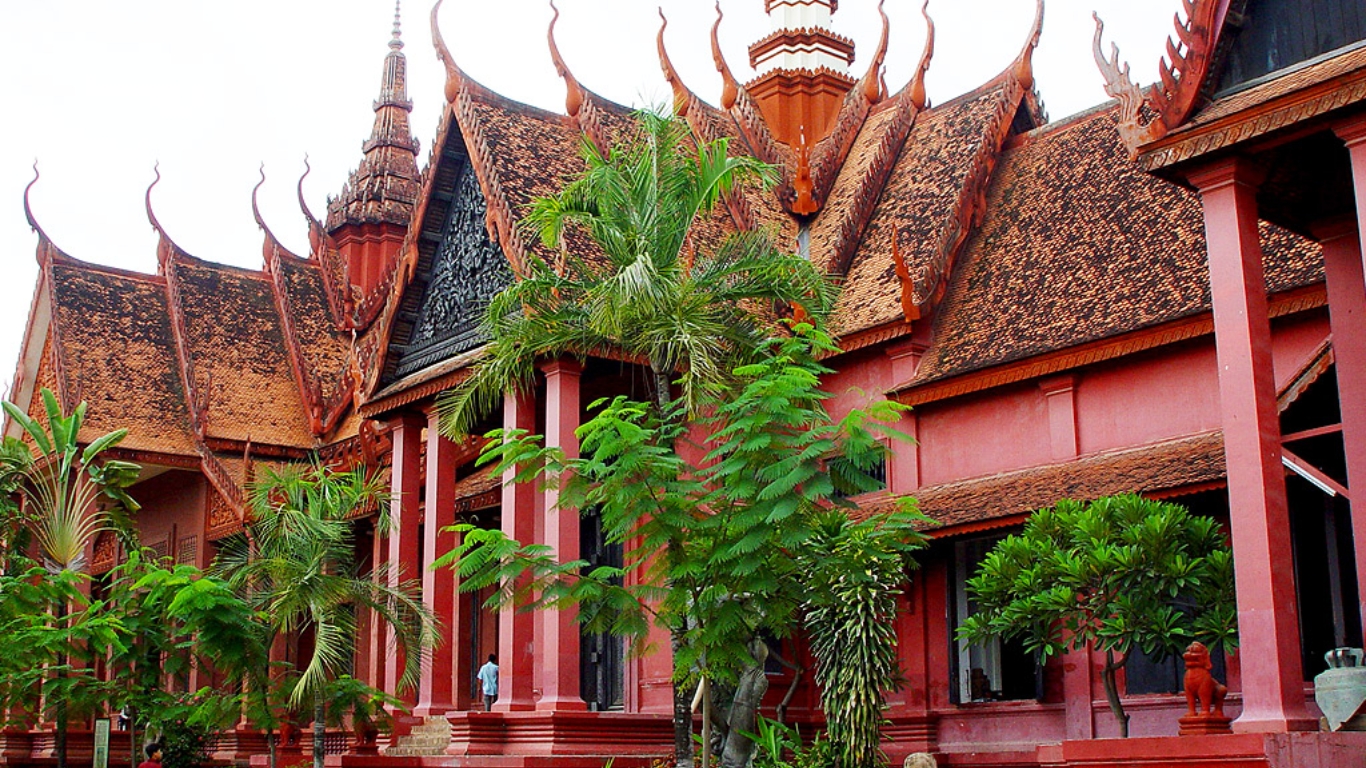
In the nutshell
Situated near the Royal Palace, the museum is conveniently positioned for tourists to explore the rich cultural heritage of the country. Here are some highlights of the Cambodian National Museum:
- Location: Conveniently located in Phnom Penh, the Cambodian National Museum is easily accessible at Street 178, Sangkat Chey Chumneas, Khan Daun Penh, Cambodia.
- Khmer Artifacts: Discover a captivating collection of Khmer artifacts spanning from the 9th to 15th centuries AD, showcasing the rich cultural heritage of Cambodia.
- Bronze Objects: Marvel at over 6,800 Bronze objects, with over 600 on permanent display, highlighting the exceptional craftsmanship of the Khmer civilization.
- It was constructed by the French over the period of seven years from 1917 to 1924.
While exploring, you’ll gain deeper insights into Cambodia’s history and artistry through an immersive and educational experience offered by the Cambodian National Museum.
What Artifacts are in the Cambodian National Museum?
The entire compound of the National Museum of Cambodia covers an enormous area comprising four pavilions that face an inviting courtyard garden. It is home to approximately 12,320 items from prehistoric times to the period before, during, and after the Khmer Empire. Here are some highlight artifacts for your information:
Angkor Wat Stone Inscriptions
The museum houses a remarkable collection of stone inscriptions from the Angkor Wat temple complex. The Angkor Wat stone inscriptions date back to the 9th to 15th centuries AD, corresponding to the height of the Khmer Empire’s power and influence. These inscriptions were meticulously carved onto temple walls, pillars, and lintels, often in Sanskrit or Khmer script.
These inscriptions chronicle the achievements, religious beliefs, and royal decrees of the Khmer rulers. They offer detailed accounts of battles, construction projects, and religious rituals, shedding light on the political, social, and cultural aspects of the empire.
The stone inscriptions reveal the strong influence of Hinduism and Buddhism, with descriptions of deities, mythical narratives, and philosophical concepts. They also provide information about administrative systems, legal codes, economic activities, and daily life in the Khmer Empire.
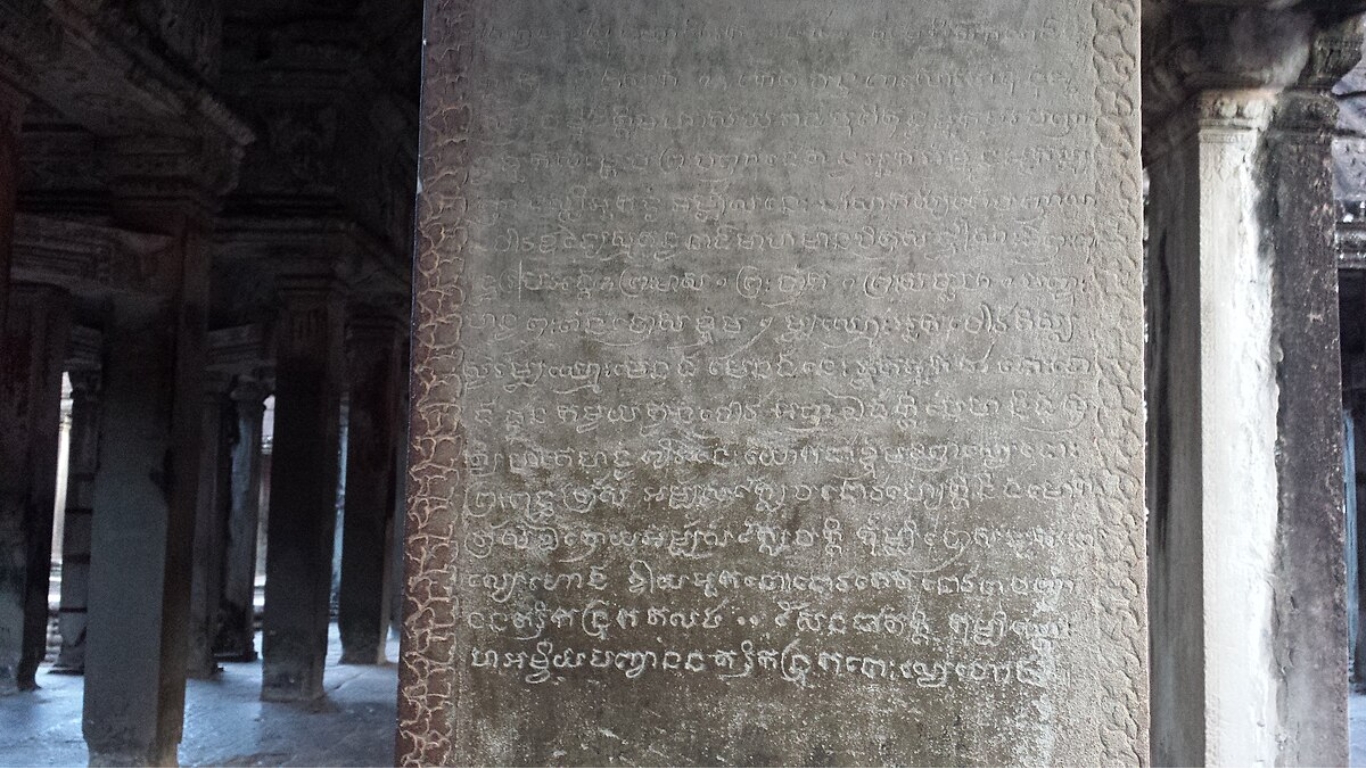
Preah Ko Style Statues
Preah Ko style statues, characterized by their distinctive headdresses and elaborate jewelry, are prominently displayed in the museum. These statues offer a glimpse into the religious beliefs and artistic traditions of ancient Cambodia.
Crafted during the 9th century AD, these sandstone sculptures feature elegant proportions, intricate details, and serene expressions. Depicting Hindu deities and mythical figures, they offer insights into the religious beliefs and artistic traditions of the Khmer Empire. Preserved with care, these statues provide a captivating glimpse into the artistic legacy of the Khmer civilization.
Khmer Ceramics
The Cambodian National Museum also houses a stunning collection of Khmer ceramics that exemplify the artistic mastery of this ancient craft. Dating back to the 9th to 16th centuries, these pottery pieces showcase intricate designs, vibrant colors, and a fusion of Hindu and Buddhist influences.
The collection includes bowls, plates, jars, vases, and figurines, each reflecting the skillful techniques of wheel-throwing, hand-building, and glazing. The ceramics served both practical and ritualistic purposes, finding their place in everyday life and religious ceremonies.
Admire the delicate curves, exquisite glazes, and intricate patterns that transport you back in time, offering a glimpse into the artistic achievements and cultural heritage of the Khmer people. These ceramics are a testament to their creativity and craftsmanship, bridging the past with the present.
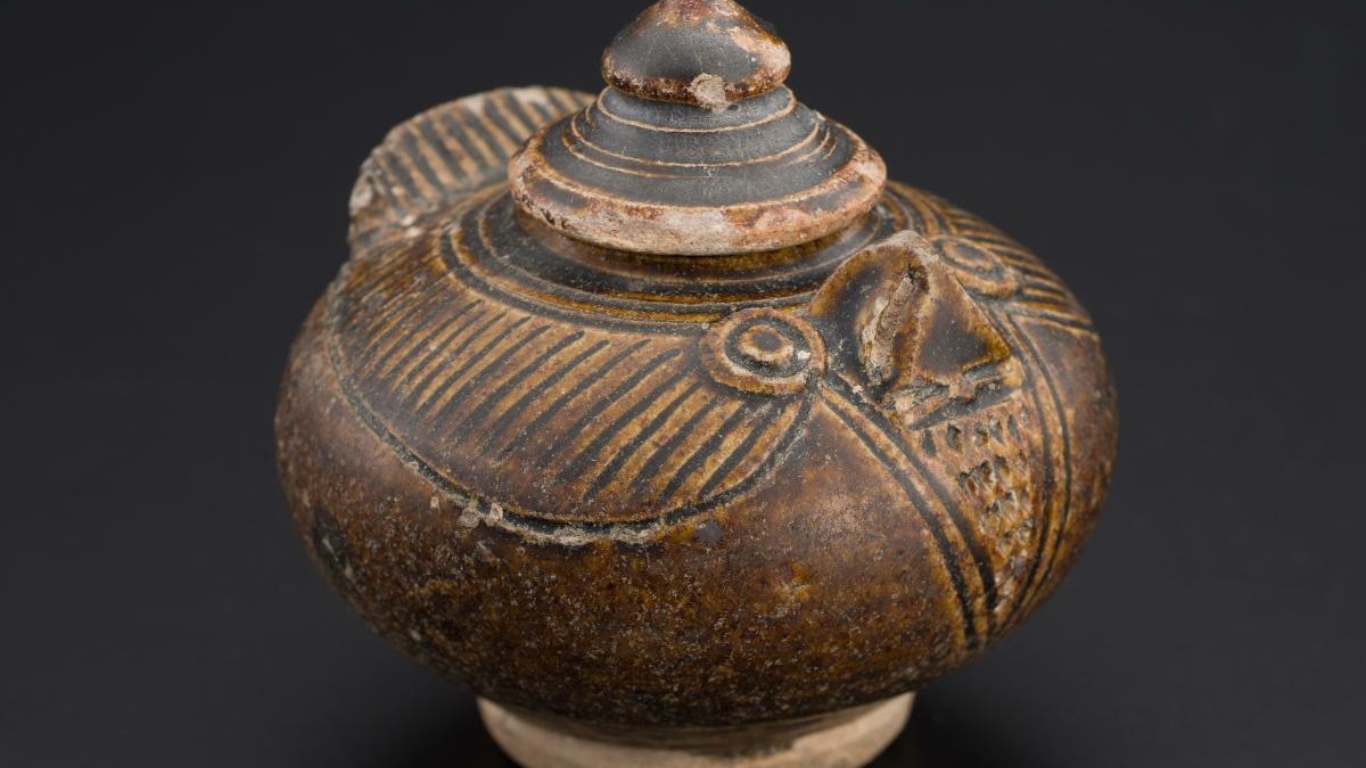
Buddha Images
The collection of Buddha images at the Cambodian National Museum is truly awe-inspiring. The serene and meticulously crafted statues depict the various forms and poses of the Buddha, representing different periods and artistic styles.
Crafted with meticulous detail, these statues depict the enlightened figure of the Buddha in various poses. Made from stone, bronze, and wood, they invite contemplation and reflect Cambodia’s artistic heritage. Witness the evolution of these icons and feel a sense of inner peace in their presence.
Some of the Buddha Images that you can find in the Cambodian National Museum:
- Seated Buddha: A serene statue in a cross-legged position, symbolizing meditation and inner peace.
- Standing Buddha: Majestic figure with one hand raised in fearlessness, representing compassion.
- Reclining Buddha: Statue depicting Buddha lying on his side, signifying final enlightenment.
- Walking Buddha: Graceful portrayal, symbolizing mindful movement on the path to enlightenment.
- Earth-Touching Buddha: Statue with hand touching the ground, representing triumph over temptation.
- Teaching Buddha: Image with raised hands, symbolizing the dissemination of wisdom.
Royal Regalia
The royal regalia displayed in the Cambodian National Museum are exquisite artifacts that embody the power and prestige of Cambodian monarchs. Crowns, swords, scepters, and ornate garments showcase the opulence and cultural significance of the monarchy throughout history. Admire the craftsmanship and symbolism of these regal treasures, you will be offered a glimpse into Cambodia’s rich royal heritage.
Stone and Bronze Sculptures
At the Cambodian National Museum, you’ll discover a captivating collection of stone and bronze sculptures. These exquisite artworks, intricately carved and cast, showcase the artistic mastery of the Khmer civilization.
Depicting deities, mythical beings, and scenes from epics, they offer a glimpse into Cambodia’s rich cultural heritage and religious traditions. Prepare to be mesmerized by the timeless beauty and craftsmanship of these ancient masterpieces.
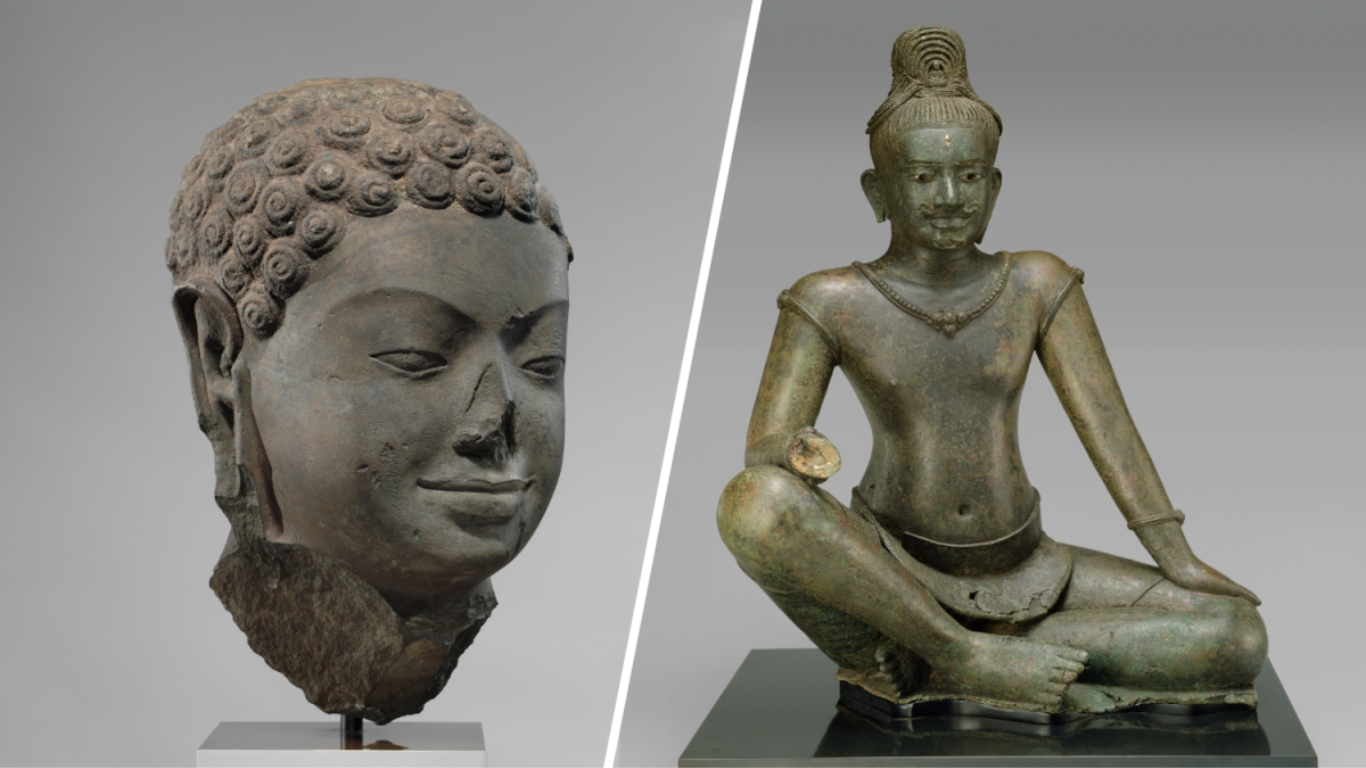
Above are just 5 significant artifacts among approximately 12,320 items from prehistoric times to the period before, during, and after the Khmer Empire (with approximately 6,800 Bronze objects, with over 600 on permanent display). In order not to skip a large area of the museum, you should start left and continue in a clockwise and chronological direction.
Besides acting as a national exhibition of Khmer culture to promote awareness, understanding and appreciation of Cambodia’s heritage via presentation, conservation, and acquisition of Cambodian cultural materials, the museum also aims to educate and inspire its visitors.
Some of our best-seller Cambodia Tours have visit the Cambodian National Museum:
Helpful Travel Information
The ideal time to visit: You can visit the National Museum of Cambodia all year round.
Opening hours: 5.00 a.m. till 8.00 p.m. with last admission tickets sold at 4.30 p.m.
National Museum of Cambodia Entrance Fee:
- Foreigners aged 10 to 17: $5
- Foreigners aged 18 and above: $10
- Cambodians: 500 riels
Besides, when visiting the Cambodian National Museum and other attractions in Cambodia, it is recommended to dress modestly and respectfully, especially in religious and cultural sites. Here are some clothing guidelines to keep in mind:
- Shoulders: It is advisable to have your shoulders covered, so sleeveless tops or tank tops may not be appropriate.
- Knees: Wearing clothing that covers your knees is respectful, so avoid wearing shorts or skirts that are too short.
- Loose and Comfortable: Opt for loose-fitting and comfortable clothing, as the weather in Cambodia can be hot and humid.
- Footwear: Choose comfortable shoes suitable for walking, as you may be exploring different sites.
Where to visit next?
- Royal Palace: Experience the grandeur of the Royal Palace complex.
- Silver Pagoda: Marvel at the Silver Pagoda’s exquisite silver floor tiles and precious Buddhist statues.
- Tuol Sleng Genocide Museum: Learn about Cambodia’s tragic history at this former prison turned memorial.
- Mekong River Boat Trip: Enjoy a scenic boat trip along the Mekong River.
- Angkor Wat Temples: Journey to Siem Reap to explore the ancient temples of Angkor Wat.
>> Beyond the Cambodian National Museum in Phnom Penh: Top 10 unusual things to do in Phnom Penh
The Indochina Voyages team.

